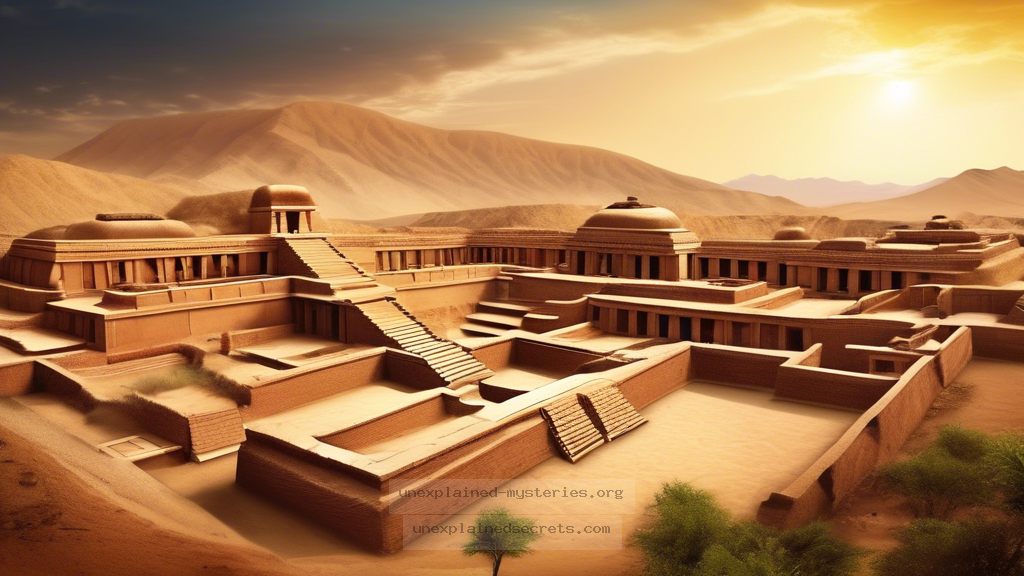What Happened to the Advanced Civilization of the Indus Valley?
What Happened to the Advanced Civilization of the Indus Valley?
The Indus Valley Civilization, often regarded as one of the world’s earliest urban cultures, flourished around 2500 BCE in what is now Pakistan and northwest India. This civilization boasted advanced city planning, sophisticated drainage systems, and a script that remains undeciphered. Yet, despite its impressive achievements, the fate of the Indus Valley Civilization is shrouded in mystery. What led to its decline and eventual disappearance? Understanding this enigma not only sheds light on the past but also offers valuable lessons for contemporary society. In this post, we will explore the various theories surrounding the disappearance of the Indus Valley Civilization, analyze historical evidence, and examine ongoing research that continues to unravel this ancient mystery.
Historical Context of the Indus Valley Civilization
The Indus Valley Civilization (IVC) spanned across a vast area, covering approximately 1.25 million square kilometers. It consisted of well-planned cities such as Harappa and Mohenjo-Daro, characterized by their grid layouts, advanced drainage systems, and standardized fired-brick construction. The civilization thrived around 3300-1300 BCE, with its peak occurring between 2600 and 1900 BCE. The people of the IVC were engaged in agriculture, trade, and crafts, which fostered economic prosperity.
However, around 1900 BCE, the civilization began to decline. The reasons behind this decline are not fully understood, leading to numerous theories that range from environmental changes to socio-political factors. The mystery surrounding the IVC’s collapse continues to fascinate historians, archaeologists, and enthusiasts alike.
Theories about the Decline of the Indus Valley Civilization
Several theories have emerged to explain the decline of the Indus Valley Civilization, each with varying degrees of support from archaeological and environmental evidence. Here are some of the most prominent theories:
- Climate Change: Evidence suggests that the region experienced significant climatic shifts during the decline period. Some scientists argue that a major drought could have led to crop failures, forcing the population to migrate.
- River Changes: The Indus River, which was vital for agriculture and trade, may have shifted its course or diminished in flow. This would have drastically affected the agricultural output and the civilization’s sustainability.
- Invasion or Migration: There are theories proposing that invasions from nomadic tribes, such as the Aryans, could have led to the downfall of the IVC. However, this theory lacks substantial archaeological evidence.
- Sociopolitical Issues: Internal strife and social upheaval may have contributed to the decline. The civilization’s complex urban centers could have faced challenges from resource scarcity or governance issues.
Core Concepts and Evidence Supporting the Climate Change Theory
Among the various theories, the climate change hypothesis has garnered considerable attention. Paleoclimatic studies, including sediment analysis and pollen examination, show a stark transition from a humid climate conducive to agriculture to a drier environment. Research conducted by the Indian Institute of Tropical Meteorology indicates that the region faced reduced monsoon intensity during the decline phase, which would have severely impacted agricultural productivity.
Moreover, archaeological findings suggest a gradual depopulation of major urban centers like Mohenjo-Daro. The presence of less sophisticated structures and artifacts in the later phases of the civilization indicates a decline in social complexity and economic activity. This shift suggests that as resources became scarce, the population may have migrated to more hospitable areas.
Real-World Examples: Archaeological Findings
Archaeological excavations in the Indus Valley have revealed significant evidence that supports the climate change theory. For example, studies of the sediments from the riverbeds indicate a pattern of alternating wet and dry phases. Additionally, the discovery of desiccated agricultural fields and abandoned cities reinforces the idea of a civilization unable to sustain itself due to environmental changes.
One notable excavation site is the ancient city of Dholavira, where researchers have found water conservation systems that demonstrate an advanced understanding of hydraulic engineering. However, these systems suggest that the inhabitants were increasingly dependent on water management, which may have become untenable as climatic conditions worsened.
Comparative Analysis: Other Ancient Civilizations
The decline of the Indus Valley Civilization can be compared to other ancient cultures that faced similar challenges. For instance, the Maya civilization experienced a collapse due to prolonged droughts and resource depletion. Similarly, the collapse of the Classic Period of the Maya civilization involves evidence of environmental stress, warfare, and societal fragmentation.
| Civilization | Decline Factors | Evidence |
|---|---|---|
| Indus Valley | Climate change, resource depletion | Archaeological evidence of abandoned cities, sediment analysis |
| Maya | Drought, warfare, societal stress | Pollen analysis, archaeological findings of conflict |
| Roman Empire | Economic troubles, invasions | Historical texts, archaeological evidence of decline |
Alternative Perspectives: Invasion vs. Internal Decline
While the climate change theory is compelling, some scholars argue against it, suggesting that invasion or internal decline played more pivotal roles. The theory of Aryan invasion, for example, posits that Indo-European tribes invaded and displaced the Indus Valley inhabitants. However, this theory has been widely debated and criticized due to the lack of concrete archaeological evidence supporting mass migration or violent conquest.
In contrast, the internal decline perspective emphasizes that social and political instability could have led to the gradual disintegration of urban centers. As resources dwindled, competition for land and water could have sparked conflict, leading to societal fragmentation. This perspective aligns more closely with the evidence of urban centers becoming smaller and less complex over time.
Common Misconceptions about the Indus Valley Civilization
Despite extensive research, several misconceptions persist about the Indus Valley Civilization. One prevalent myth is that the civilization was entirely peaceful and lacked warfare. However, archaeological evidence indicates that the inhabitants may have engaged in conflict, as seen in fortified structures and weapons found at various sites.
Another misconception is that the civilization abruptly ended. In reality, the decline was likely a gradual process, characterized by depopulation and a transition to smaller, less organized communities rather than an instantaneous collapse. This gradual shift may explain why some aspects of the Indus culture persisted long after the major urban centers fell into decline.
Best Practices for Investigating Lost Civilizations
Investigating lost civilizations like the Indus Valley requires a multidisciplinary approach. Here are some best practices for researchers and enthusiasts:
- Interdisciplinary Collaboration: Collaborate with experts in archaeology, climatology, anthropology, and history to gain a holistic understanding of the civilization.
- Utilize Modern Technology: Employ advanced technologies such as satellite imagery, ground-penetrating radar, and GIS mapping to uncover hidden sites and analyze landscapes.
- Continual Research: Stay updated with ongoing excavations and studies, as new findings may challenge existing theories and reshape our understanding.
- Public Engagement: Engage the public through educational programs, documentaries, and publications to foster interest in ancient civilizations and support for research initiatives.
Future Developments and Ongoing Research
Research on the Indus Valley Civilization is ongoing, with new discoveries continuously adding complexity to our understanding of this ancient culture. Recent projects involve re-examining existing archaeological sites and employing cutting-edge technology to analyze artifacts and urban layouts.
Additionally, interdisciplinary studies focusing on climate data and agricultural practices are crucial for piecing together the environmental context of the civilization’s decline. As more data emerges, it is likely that our understanding of the Indus Valley Civilization will evolve, leading to new insights and theories.
Conclusion: The Enduring Mystery of the Indus Valley Civilization
The disappearance of the Indus Valley Civilization is one of history’s most perplexing mysteries. While significant strides have been made in understanding the potential causes of its decline, the complete picture remains elusive. Factors such as climate change, resource depletion, internal strife, and possibly invasion all contribute to the narrative, but no single explanation suffices.
As ongoing research continues to shed light on this ancient civilization, it serves as a reminder of the fragility of human societies and the complex interplay between environment, culture, and history. Exploring these mysteries not only satisfies our curiosity about the past but also prompts critical reflections on our present and future. 🌍
Other Articles
Recent Posts
- What Happened to Flight MH370? The Conspiracy Theories That Still Haunt Us
- What Secrets Lurk Within the Walls of the Infamous Trans-Allegheny Lunatic Asylum?
- What Evidence Supports the Existence of Bigfoot in the Pacific Northwest?
- What Happened to the Indus Valley Civilization? Unraveling the Mysteries of Ancient Urban Life
- Can Telepathy Be Scientifically Proven Through Laboratory Evidence?







